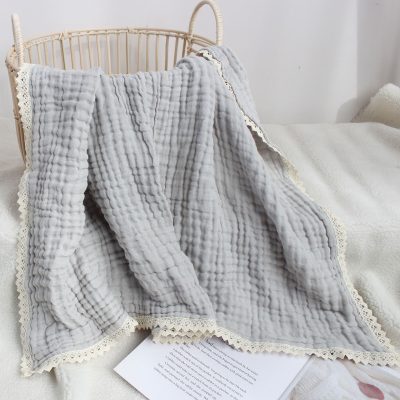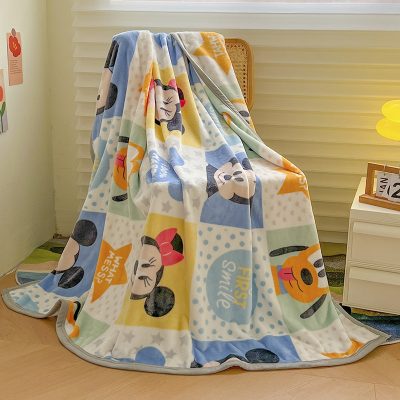Baby blankets come in various materials, each offering different benefits in terms of softness, warmth, breathability, and ease of care. Here are some common materials used for baby blankets:
1. **Cotton**: Cotton is a popular choice for baby blankets due to its softness, breathability, and durability. It’s gentle on baby’s sensitive skin and absorbs moisture well, making it suitable for different seasons. Cotton blankets are easy to wash and maintain.
2. **Flannel**: Flannel is a soft and warm fabric often made from cotton or a cotton blend. It has a brushed surface that traps heat, making it ideal for cooler weather. Flannel blankets are cozy and gentle on baby’s skin.
3. **Fleece**: Fleece blankets are soft, lightweight, and warm. They are typically made from polyester and provide insulation without being bulky. Fleece blankets are quick-drying and easy to care for, making them convenient for busy parents.
4. **Sherpa**: Sherpa blankets have a plush texture resembling sheepskin or fleece. They are warm and cozy, providing comfort to babies. Sherpa blankets often have a soft, fluffy pile on one side and a smooth microfiber or fleece backing.
5. **Muslin**: Muslin blankets are lightweight, breathable, and versatile. They are usually made from cotton and have an open weave that allows for airflow, making them ideal for warmer climates or as swaddling blankets. Muslin blankets become softer with each wash.
6. **Cashmere or Merino Wool**: These natural fibers are soft, warm, and luxurious. Cashmere and merino wool blankets provide excellent insulation while being breathable. They are often used in colder climates or for special occasions due to their softness and elegance.
7. **Bamboo**: Bamboo blankets are soft, silky, and hypoallergenic. They are naturally breathable and regulate temperature well, keeping babies cool in summer and warm in winter. Bamboo fabric is eco-friendly and biodegradable.
When choosing a baby blanket, consider factors such as the season, baby’s skin sensitivity, ease of care, and personal preference. It’s important to wash new blankets before using them to remove any potential irritants or residues. Additionally, always check the care instructions provided by the manufacturer to ensure proper maintenance of the blanket’s quality and softness over time.


















